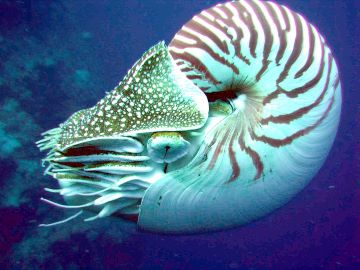6_Nautilus_edit.jpg

The chambered nautilus has survived natural extinction events but may not survive the impact of humans. Credit: Profberger, CC BY 2.5.
The chambered nautilus comes from a long line of survivors. Its earliest ancestors appeared more than 500 million years ago. Its family tree has persisted through five global extinctions, including the one that killed the dinosaurs.
But the modern-day nautilus may not do so well. It’s threatened by the current extinction event, caused by our changing climate. And it’s also threatened by its own beauty. People are killing millions of them for their spiral shells and the shells’ mother-of-pearl lining.
The nautilus is a relative of the octopus and squid. Its shell consists of a series of chambers. The animal can fill each chamber with air or water to control its depth. It appears to be a scavenger, living mainly on scraps.
The nautilus inhabits tropical waters in the Indian and western Pacific oceans. But it doesn’t appear to be as common as it used to be. In fact, it’s vanished from some locations.
One reason may be climate change. It might not be able to survive in the warmer and more acidic oceans. Or it could be moving northward to cooler waters as its current habitat heats up. It could also be moving deeper. It can’t go too deep, though, or its beautiful shell will implode under the pressure.
The nautilus is also being hunted for its shells. From 2000 to 2016, about 1.7 million shells were brought into the United States alone. Some countries are protecting the creatures. And the U.S. has listed the nautilus as “threatened”—a survivor that’s trying to hang on.

